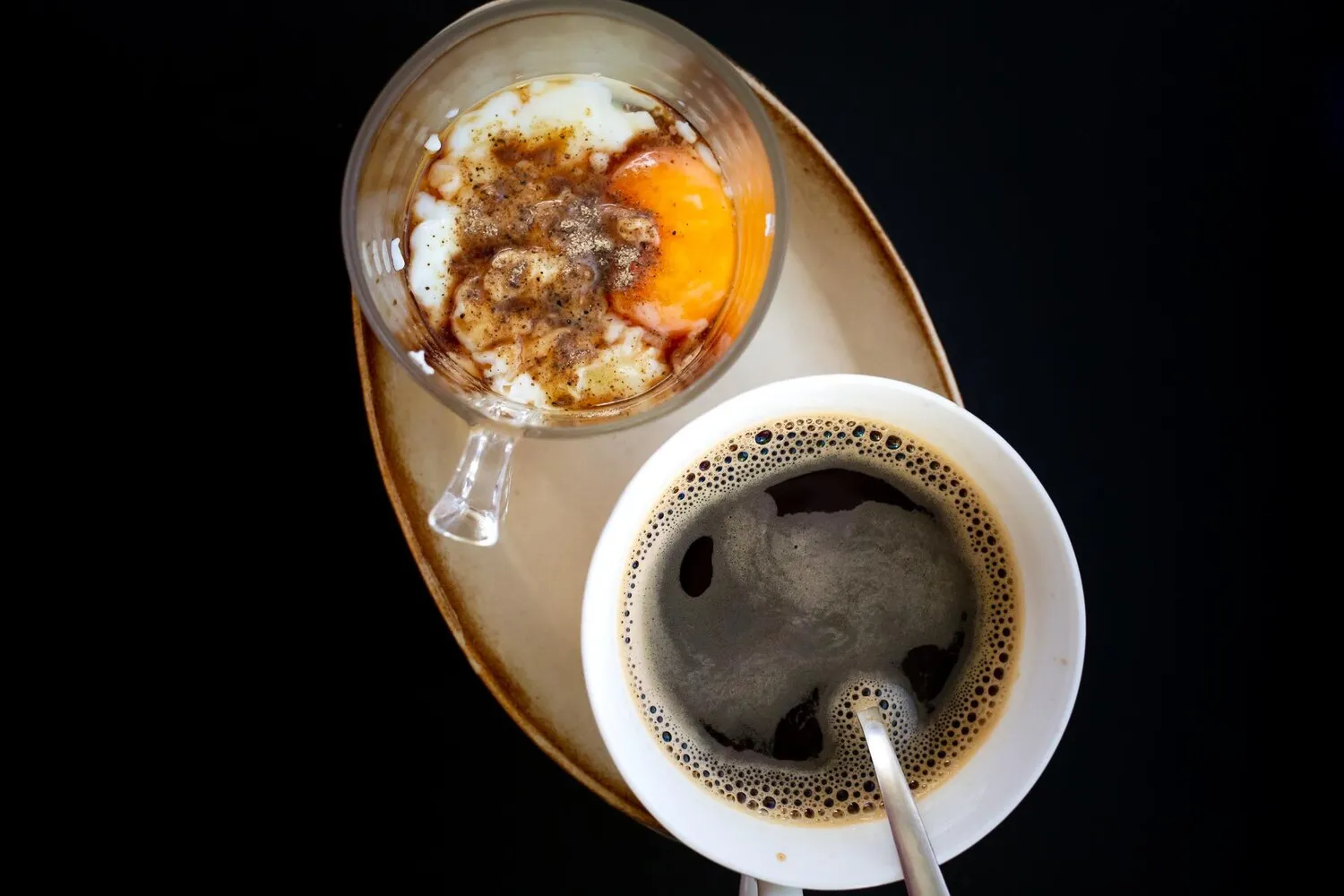
Espresso
Concentrated coffee beverage brewed by forcing hot water through finely-ground coffee beans.
Nutrition Facts
* The % Daily Value (DV) tells you how much a nutrient in a serving of food contributes to a daily diet. 2,000 calories a day is used for general nutrition advice.
Art in Coffee
The invention of espresso is linked to the desire for quicker coffee preparation in the early 20th century. Inventors in Italy sought to streamline the brewing process, leading to the development of machines that forced hot water through coffee grounds, reducing brewing time significantly.
Espresso holds a central position in Italian culture and has become a global phenomenon, deeply ingrained in daily routines and social interactions.
Italian Coffee Culture
In Italy, espresso is not just a drink; it's a ritual. Bars serve as community hubs where people quickly consume an espresso 'al banco' (at the counter) before starting their day or during a short break. It's often consumed quickly and without added milk or sugar.
Social Drink
Espresso forms the base for numerous other coffee drinks enjoyed globally, such as cappuccinos, lattes, and macchiatos, making it a foundational beverage in coffee culture worldwide. Coffee shops around the world are now common meeting points, and espresso-based drinks are central to this social experience.
The 'Crema' Obsession
The crema is a crucial element of a well-made espresso, seen as an indicator of quality and proper extraction. Coffee enthusiasts often examine and appreciate the crema's color, texture, and persistence.
Espresso boasts a bold and intense flavor profile, characterized by its concentrated coffee essence.
The flavor profile of espresso is complex and multifaceted. Expect a rich, robust body with notes of bitterness, sweetness, and acidity all playing a role. The specific flavor notes depend heavily on the origin and roast level of the coffee beans used, ranging from chocolate and caramel to fruit and floral nuances. A key element is the crema, a reddish-brown foam on top, which contributes to the aroma and perceived mouthfeel.
Grind Size Matters
The grind size is critical. It must be very fine and uniform to allow for proper extraction. Too coarse, and the espresso will be weak and sour (under-extracted); too fine, and it will be bitter and over-extracted.
Tamping Technique
Tamping (compressing the coffee grounds in the portafilter) must be consistent and even. Aim for approximately 30 pounds of pressure to create a puck that provides consistent resistance to the water flow.
Water Temperature
Water temperature is essential. The ideal temperature range is between 195 and 205 degrees Fahrenheit (90-96 degrees Celsius) for optimal extraction. Too cool, and the espresso will be sour; too hot, and it will be bitter.
Machine Maintenance
Regularly clean and maintain your espresso machine to ensure consistent performance and prevent the buildup of mineral deposits that can affect the taste of the espresso.
Explore additional Coffee dishes and restaurants
Explore CoffeeDiscover top dining spots and culinary experiences in Aracaju.
Explore AracajuLearn more about the food culture, restaurant scene, and culinary heritage of Brazil.
Explore Brazil